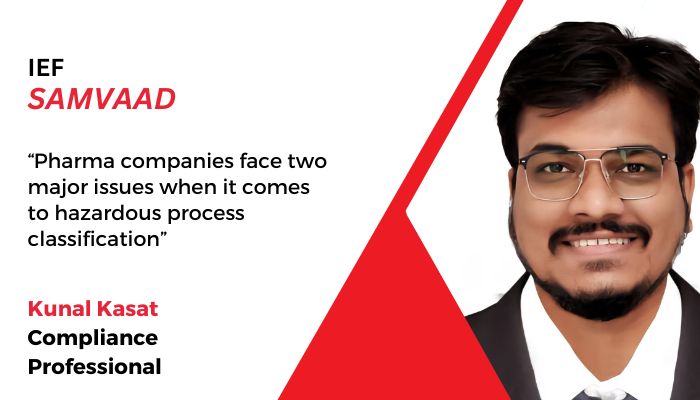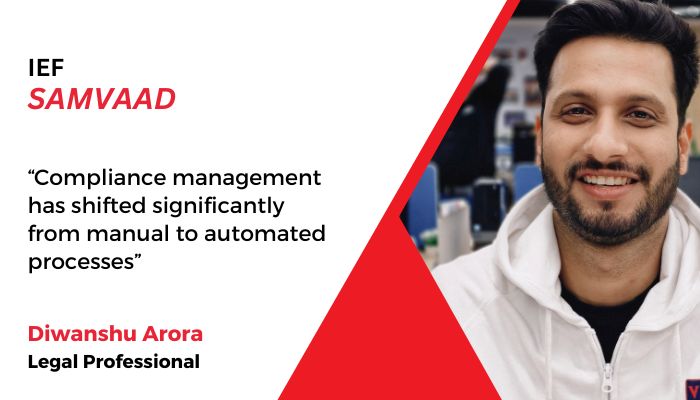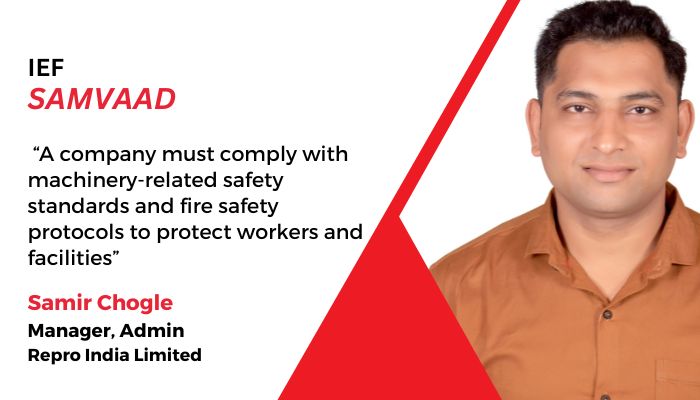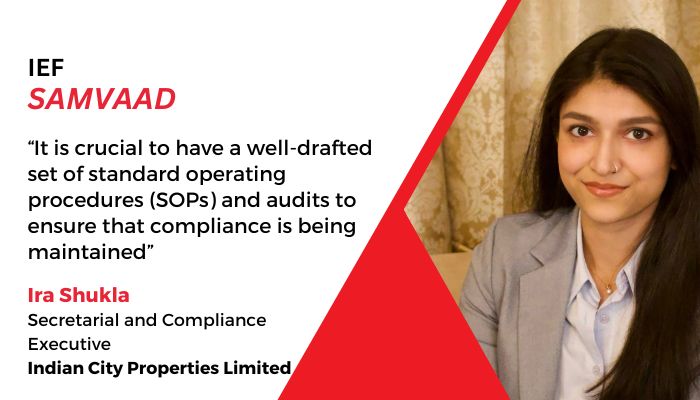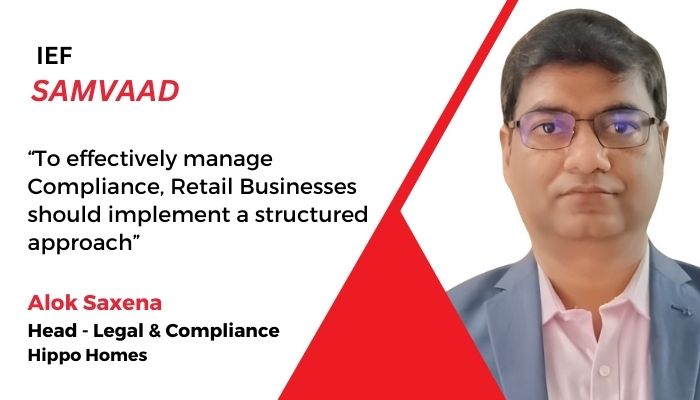Kunal Kasat, Compliance Professional, speaks to the India Employer Forum about compliance challenges in the pharmaceutical sector, the role of technology in compliance and much more…
1.What are the biggest compliance challenges faced by companies in the pharmaceutical sector?
Compliance challenges are not specific to any industry; challenges across the nation are very basic. For instance, issues around overtime wages continue to be a persistent challenge across industries in India. In spite of the legal provisions mandating that workers be compensated at twice their ordinary wage rate for overtime work, this is often not followed in practice. Many workers report being underpaid at the regular or just 1.5 times the wage rate, violating statutory norms. The issue is further complicated by varying state-specific rules on permissible overtime hours. There are also instances where this limit is significantly exceeded, without proper compensation or record-keeping. In several cases, workers are reported to have worked beyond 70 to even 125 hours per quarter, crossing state-sanctioned thresholds.
Another major challenge is that under the Environment Protection Act, many conditions that are required to get consent from the Pollution Control Boards are copy-pasted and are not applicable to the specific industry. This leads to repeated requests for modification, creating administrative burden. It becomes even more challenging during the third-party audits, as they insist on compliance with all the mentioned conditions even when they are not relevant.
Mandatory retrofit of diesel generator (DG) sets as per recent pollution control notifications is another major challenge that companies face today. Many states now require existing DG sets to be upgraded or replaced based on their kVA capacity. The same is expensive and applying for a retrofit can cost more than lakhs of rupees. Even though the notification was issued over a year and a half ago, Pollution Control Boards have not yet provided clear guidance on implementation. This lack of clarity has left companies confused as to whether they should retrofit or replace their DG sets entirely.
2.How do overlapping obligations under the Contract Labour Act and Inter-State Migrant Workmen Act create challenges in compliance?
Correct applicability of laws at specific locations is very challenging. Inter-state Migrant Workmen is one of those acts. It is widely believed that this Act is applicable only if 5 or more inter-state workers are engaged, but that’s not the case. The Act applies when a contractor brings even a single worker from another state under an agreement with the originating state.
To comply, the contractor must also obtain a certificate from both the states; from which the worker is brought and the one where the work will be performed. Getting this certificate is a lengthy and difficult process. To bypass this requirement, contractors often change the address of that particular worker so that it does not fall under the category of migrant workers. Identifying such cases requires verifying Aadhaar, PAN, wage registers, and muster rolls. There’s always a challenge, as both these acts are similar in nature. Since both acts have overlapping provisions, like issuing Form V and Form VI, the applicability often depends on the number of contractors deployed.
3.What are the key compliance challenges in maintaining statutory registers and records across industries?
There are several compliance challenges industries face, especially around maintaining statutory records. For example, registers like the Register of Wages must be maintained in detail, covering every required column under relevant laws. However, vendors and third parties often have differing attitudes; some say that the wage register should be exhaustive, while others want each and every column with aligned documentation across applicable laws.
A best-recommended practice is to inform the Labour Inspector that records are maintained digitally, and hard copies can be printed if needed. Today, many inspectors and pollution control boards accept digital records, understanding that it’s a digital era, and are less likely to raise non-compliance issues on this front.
All industries have such issues, but industries like pharmaceuticals have it more complex. Companies must first identify the type of drugs they handle and ensure that they have the correct licenses (like Form 20B, 21B, or others). If food supplements are involved, FSSAI regulations come into play. The nature of the facility, whether it’s an R&D unit, API plant, or involved in manufacturing, also affects the applicable laws. A major issue in pharma is the applicability of hazardous process classification. Many believe it doesn’t apply, but as per the Factories Act and its schedules, pharmaceutical units directly fall under hazardous processes. Ignoring this leads to serious compliance risks, especially regarding worker safety and health standards.
4.What makes compliance challenging for pharmaceutical manufacturers especially with respect to the interpretation of hazardous processes under the Factories Act ?
Pharma companies face two major issues when it comes to hazardous process classification. The first is confusion between hazardous processes and hazardous waste. Many in the industry mistakenly believe that if they’re not handling hazardous waste, the hazardous process rules under the Factories Act don’t apply. This is incorrect. The Factories Act clearly mentions pharmaceutical units in its schedule for hazardous processes, making those rules applicable. Once classified as a hazardous process, several additional compliances under the Factories Act come into play, for instance, conducting half-yearly medical examinations for workers.
Another key challenge relates to understanding what kind of medicines are being manufactured; injectables, tablets or capsules all have different licensing requirements. Companies are required to obtain an Industrial Entrepreneur Memorandum (IEM), which specifies how much product can be manufactured annually. This quantity must match the production limits stated in the Consent to Operate under the Environment Protection Act.
Under the Drugs and Cosmetics Act, companies must also hold valid Form 20B and 21B licenses, which now come with a 5-year retention period. If the company is manufacturing food supplements, compliance with FSSAI regulations is also required. One of the most critical aspects is compliance with GMP (Good Manufacturing Practices), governed by Schedule M of the Drugs and Cosmetics Act. This is essential for ensuring quality and safety. GMP compliance is also crucial for passing international audits by agencies like the USFDA, which assess anti-bribery, anti-corruption practices, and overall manufacturing standards before granting GMP certification.
5.How is technology helping manage compliance today, and what role do you see it playing in the future?
Today, companies are expected to have a proper compliance mechanism in place, not just a tool, but a structured system that tracks and manages compliance requirements effectively. Many leading firms offer digital platforms where all applicable compliances are mapped, tracked, and updated in real time. Earlier, most companies managed compliance through basic Excel sheets maintained either in-house or by external auditors. These sheets tracked return filings, register maintenance, and other tasks. However, they were limited, especially when dealing with large volumes of complex compliance data. Without a proper system, it’s difficult to monitor or verify whether all compliance obligations are being met.
Having a compliance management system, whether in-house or from a vendor, offers real advantages. At the click of a button, one can view the compliance status of a specific unit, office, warehouse, etc. This visibility helps leaders and compliance officers stay informed and make decisions quickly. In addition to these dashboards, it is also important to conduct internal audits or third-party reviews to verify whether actual compliance is happening on the ground.
6.Has the tone from the top changed when it comes to compliance, and do you see boards becoming more serious about it in light of stricter future enforcement?
In listed companies, compliance is taken much more seriously. A listed entity ensures that every compliance requirement, whether related to SEBI, labour laws, or environmental regulations, is in place. Non-compliance can damage the company’s reputation, lead to penalties, or even cause operational shutdowns.
The top management is directly accountable. They need to regularly report compliance status to shareholders and board members, making it essential that there are no gaps. Along with using a digital compliance system or tool, physical checks are also a part of the process. Visiting locations, providing a list of required documents and going through each of them may take time, therefore making it mandatory to upload all compliance documents into a central repository makes it easier to keep a check. If auditors or board members ask for proof, the same can be accessed and presented immediately. Saying “this wasn’t mandatory” is no longer an excuse. If a return is filed, the supporting document must be uploaded and available.
7.What advice would you give to a compliance team transitioning from a manual, paper-based system to a tech-driven compliance management system especially during the initial phase?
When transitioning from a paper-based compliance system to a technology-driven one, it is essential to communicate the reasons and benefits clearly to all stakeholders. While paper-based tracking may have worked for decades, it is no longer sufficient due to the increasing complexity, volume, and frequency of regulatory changes. A digital compliance system helps ensure that no compliance requirement is missed; every obligation is mapped, tracked, and monitored through real-time alerts and dashboards. In the first 3 to 6 months, the focus should remain on critical and high-risk compliances, allowing teams to gradually adjust to the system. Once the basics are well understood and adoption is in place, full-scale monitoring and documentation are rolled out across all compliance areas. This phased and supportive approach ensures a smooth transition without overwhelming the teams.
Also read
About Kunal Kasat
A highly experienced and results-driven compliance professional with over 9 years of expertise in compliance assessment, audits, and regulatory implementation.
His core strengths include regulatory research, RTI handling, policy development, and audit report presentation. With hands-on experience across industries like pharmaceuticals, defence, automotive, IT, and real estate, Kunal has led numerous successful audits—both physical and desktop reviews—while maintaining strong relationships with government authorities.
Disclaimer: The opinions and views expressed in this article, including any accompanying data, are the sole responsibility of the author and should not be construed as reflecting the official policy or position of India Employer Forum.

